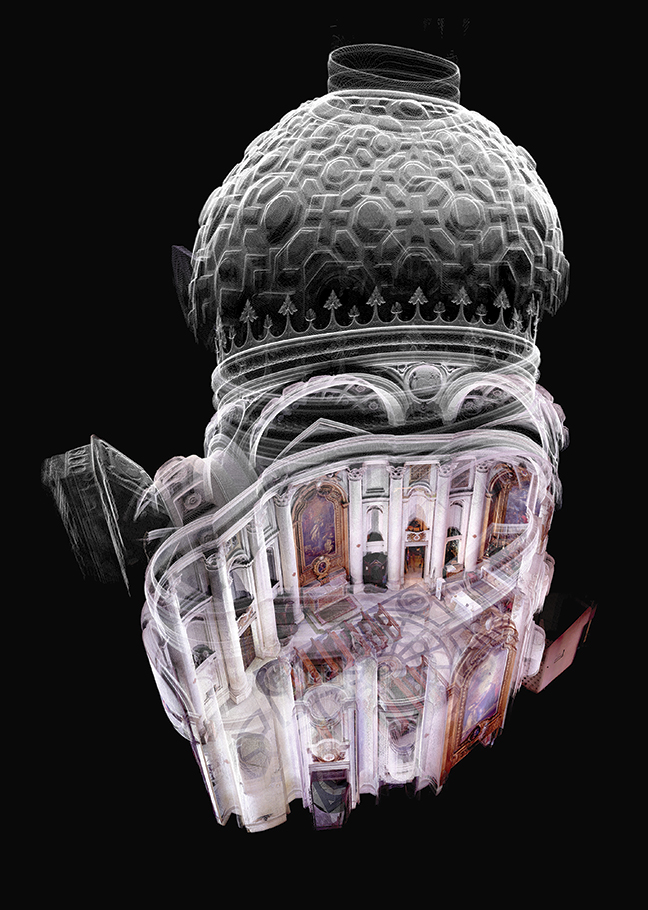
The amazing image on the cover—and the others featured in “Scanning Sacred Interiors,” by senior editor Samuel Hughes—were created as part of associate professor of architecture Andrew Saunders’ Baroque Topologies project, which is bringing Big Data to bear to produce highly detailed and exact representations of the ornate interiors of Italian churches designed by Borromini, Guarini, and other masters of architectural excess.
Using a machine called a LiDAR scanner, Saunders was able to create extraordinarily high-resolution scans encompassing millions of points of data. These scans were then linked together with specialized architectural rendering software created with complex industrial facilities in mind—but which turned out to work just as well on cherubim and seraphim.
Besides being gorgeous to look at in themselves, these renderings have also made it possible to have an accurate and multi-dimensional record of these churches—in which much of the original work was improvised, so even when plans exist they often don’t match the finished version. Using the data, the interior space of the churches can also be modeled with a 3D printer.
Saunders has also created an educational tool far richer and more flexible than, say, studying a handful of photos. (Though there’s nothing like being there, the scanned views are actually better than reality, since many details, especially high in the church domes, are lost to distance, limited lighting, and other factors.)
In “Mapping the Human Journey,” Beebe Bahrami Gr’95 describes the work of anthropology professor Theodore Schurr. This is a technology story, too, since Schurr’s work rests on advances in codifying humans’ genetic history, exemplified by the massive Human Genome project, completed in 2003.
As a graduate student, Schurr helped develop the techniques researchers use to track changes in genetic patterns over time. Work he did in the 1990s and 2000s was instrumental in fixing the date of human migration into the American continent and the location in Asia where those first migrants came from. He continues to direct more than a score of projects aimed at revealing the genetic heritage of different populations in the Americas and elsewhere. “Genealogies and kin terms are the mainstay of cultural anthropology,” Schurr says, of the perhaps universal interest in issues of identity and origins. “It’s something everyone knows about.”
John Lilly M’42’s ultimate realm of study was consciousness—especially his own. Freelancer JoAnn Greco traces his long, twisting journey in “The Psychonaut You Never Heard Of.”
Lilly began as a brilliant but more or less conventional neuroscientist with a penchant for using himself as a test subject. He would move on to provocative work on dolphin intelligence and the effects of sensory deprivation, as well as years of drug addiction and New Age philosophizing.
“My own beliefs are unbelievable,” he offered in a PBS interview, in which he appeared wearing “a coonskin cap, pearl earring-studs, and a black latex glove on one hand.” Yet PIK Professor Jonathan Moreno calls him a “pioneer” who was always trying to “understand and change the way the brain operates.”
This issue also includes our coverage of Alumni Weekend and Commencement. Judging from our photo spread on page 48, it seems reunion-goers enjoyed themselves despite wet weather on Saturday. The skies had cleared in time for Commencement, at which Democratic US Senator from New Jersey Cory Booker was the keynote speaker and Vince Price made his last appearance as Penn provost before assuming the presidency of Duke University. See this issue’s “Gazetteer” for that story, and for one on new provost Wendell Pritchett Gr’97.

